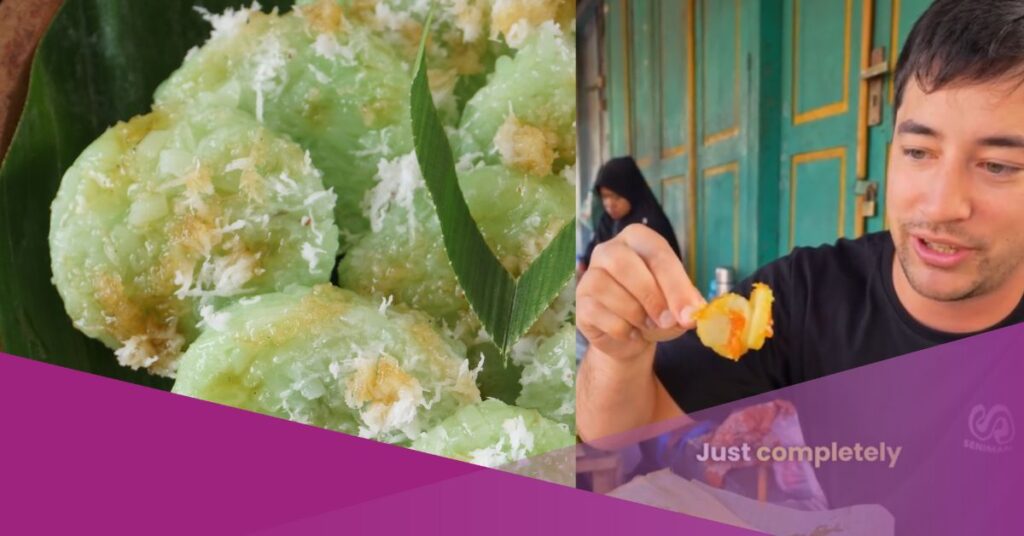Indonesia’s culinary scene is rich with flavour and diversity, and its traditional snacks are no exception. Often called jajanan pasar or market snacks, these treats are found in traditional markets across the archipelago.
They are made from everyday ingredients such as rice flour, glutinous rice, coconut milk, banana leaf, and tapioca, forming a key part of Indonesian cuisine.
A Guide to Indonesian Traditional Snacks for Travellers that Come to Indonesia
From steamed cakes to sticky rice rolls and sweet fritters, every region in Indonesia has its own distinctive snack, each representing local culture and taste.
These snacks are typically enjoyed with morning coffee or afternoon tea, offering a comforting experience that blends sweetness, texture, and nostalgia.
A Viral Street-Food Moment: Trying Yogyakarta’s Famous Lupis
A recent TikTok video by travel creator @chopstick.travel has gone viral, showing a foreign traveller enjoying one of Yogyakarta most beloved traditional snacks, lupis.
@chopstick.travel Yogyakarta’s #1 Breakfast LUPIS! 🇮🇩 I can eat this everyday!! #yogyakarta #indonesianfood #streetfood ♬ original sound – Chopstick Travel
Filmed on the side of the street, the video captures him buying indonesia traditional snacks at a humble food stall packed with local seller.
The clip is captioned: “Yogyakarta’s #1 Breakfast LUPIS! 🇮🇩 I can eat this every day!!”
As he takes his first bite, the traveller describes lupis as a “famous Jogja dessert slash breakfast.” He laughs, saying the name reminds him of lupus: “So it’s not the disease, but the dessert.”
He then explains what makes this local treat special. It is made from compressed sticky rice, sliced neatly, topped with freshly grated coconut, and finished with a generous drizzle of palm sugar syrup. The combination creates a soft, sweet, and slightly chewy texture that’s both comforting and addictive.
Lupis has long been an Indonesia traditional snack, often eaten for breakfast or as an afternoon treat.
Exploring Popular Indonesian Traditional Snacks
Indonesia’s culinary scene is rich with flavour and diversity, and its traditional snacks are no exception.
Often called jajanan pasar or market snacks, these treats are found in traditional markets across the archipelago.
They are made from everyday ingredients such as rice flour, glutinous rice, coconut milk, banana leaf, and tapioca, forming a key part of Indonesian cuisine.
From steamed cakes to sticky rice rolls and sweet fritters, every region in Indonesia has its own distinctive snack, each representing local culture and taste. These snacks are typically enjoyed with morning coffee or afternoon tea, offering a comforting experience that blends sweetness, texture, and nostalgia.
List of Indonesian Traditional Snacks
1. Kue Lumpur
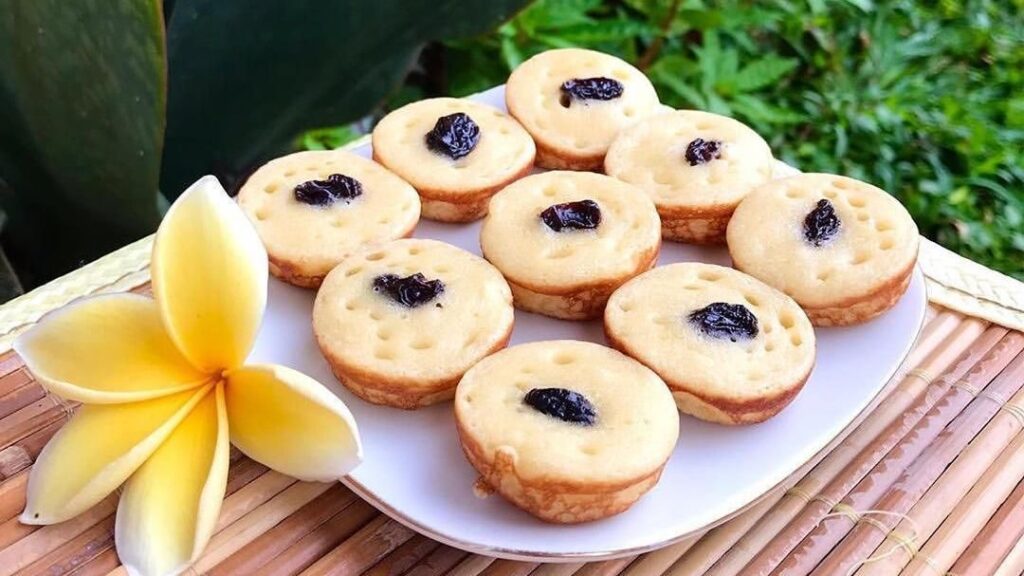
Kue lumpur is a soft, fragrant cake made from coconut milk, mashed potatoes, rice flour, and eggs. It is usually flavoured with vanilla and topped with raisins or slices of young coconut. The name literally means “mud cake” due to its smooth, moist texture.
Kue lumpur is believed to have been inspired by the Portuguese pasteis de nata, introduced during colonial times.
2. Klepon
Klepon is one of Java’s most iconic Indonesian traditional snacks. These small, green glutinous rice balls are filled with melted palm sugar that bursts in your mouth when bitten. It has a sweet taste that many people loved. Klepon is a favourite across Java, Sumatra, and Sulawesi and is often enjoyed as an afternoon treat.
3. Onde-Onde
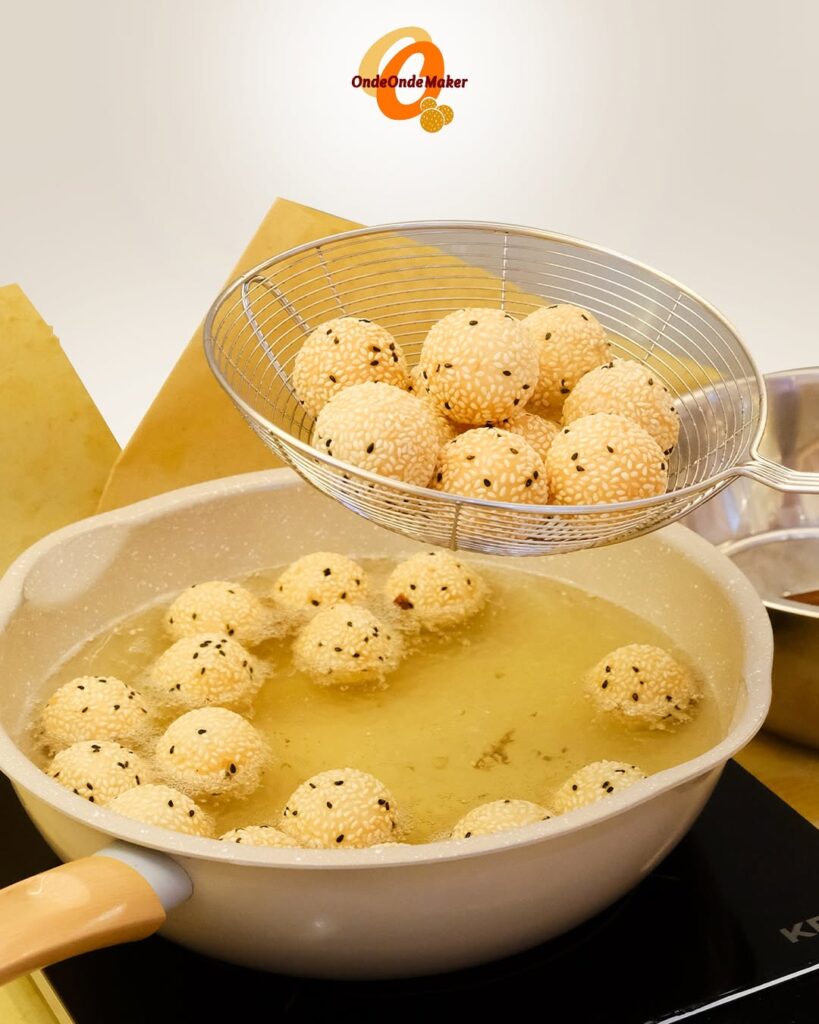
Onde-onde is a classic snack of Indonesian street food culture with Chinese origins. It is made from wheat flour dough filled with mung bean paste, rolled in sesame seeds, and deep-fried until golden brown.
The result is a chewy, nutty snack with a slightly crisp exterior. Today, onde-onde is a common sight in markets and roadside stalls across Indonesia.
4. Arem-Arem
Arem-arem is a savoury snack made from compressed rice filled with spiced vegetables or minced meat, all wrapped in banana leaves. This snack resembles lemper, but its rice is softer and cooked with coconut milk, giving a richer taste. Originating from Central Java, arem-arem is a popular breakfast item and a filling snack for travellers on the go.
5. Putu Ayu
Putu ayu is one of the most beautiful traditional steamed cakes in Indonesia. Made from rice flour, eggs, and coconut milk, the cake gets its bright green colour from pandan extract and is topped with grated coconut.
Its texture is soft and light, with a subtle sweetness that pairs perfectly with hot tea. The presentation, shaped like a small flower, makes it visually appealing as well.
6. Aci
Aci is a Sundanese term for tapioca flour or starch made from cassava. This simple yet versatile ingredient is a staple food in many Sundanese dishes, especially those from Bandung. When cooked, aci is often transformed into crispy or crunchy snacks, making it a beloved part of Indonesian street food culture.
7. Lemper
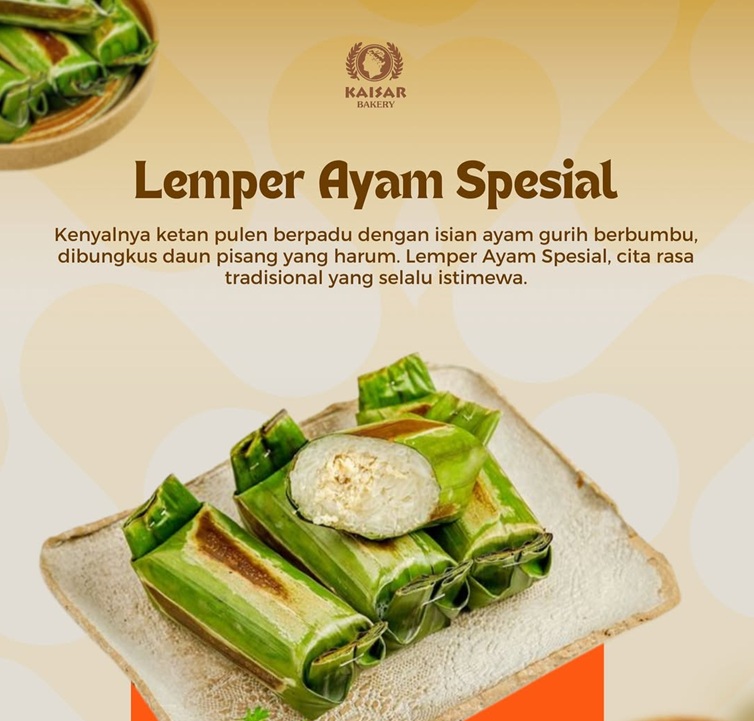
Lemper is a glutinous rice roll filled with seasoned chicken or beef and wrapped in banana leaves. When steamed or grilled, the banana leaves add a distinct aroma that enhances the savoury filling. Lemper is widely enjoyed as a light meal or snack, offering a delicious blend of sticky rice and spiced meat.
8. Getuk
Originating from Magelang, Central Java, getuk is made from boiled cassava that is mashed, shaped, and served with grated coconut and brown sugar. It has a chewy texture and natural sweetness from cassava. Some versions are dyed in colourful layers, making it visually striking on traditional market displays.
9. Kue Cubit
Kue cubit, literally meaning “pinch cake,” is a small pancake-like snack cooked in a special mould. Made from flour, sugar, butter, and eggs, it’s served half-cooked to create a gooey texture. Traditionally topped with chocolate sprinkles or grated cheese, modern versions feature flavours like red velvet and green tea. It’s a common Indonesian street food found near schools and parks.
10. Dadar Gulung
Dadar gulung is a traditional rolled pancake filled with a sweet mixture of grated coconut and palm sugar. The pancake is naturally green from pandan leaf juice or food colouring. It’s soft, sweet, and aromatic. Dadar gulung is a classic example of how simple ingredients can create a comforting snack.
11. Lupis
Lupis is a sticky rice snack shaped like triangles or cylinders, similar to lontong. It’s coated in grated coconut and served with kinca sauce, a sweet palm sugar syrup. Popular across Java, lupis is often enjoyed for breakfast or as a sweet snack. The chewy texture of glutinous rice combined with coconut and syrup makes it irresistible for first-time visitors.
12. Kue Talam
Kue talam is a soft, steamed two-layer cake made from rice flour and coconut milk. The top layer is usually white and slightly salty, while the bottom layer is sweet and coloured with pandan or palm sugar. Originally from Betawi (Jakarta), this snack is a favourite for those who enjoy the contrast of sweet and savoury flavours.
13. Nagasari
Nagasari is another classic made from rice flour and coconut milk, filled with slices of banana and wrapped in banana leaves. It is steamed until firm and slightly sticky. The aroma of banana leaves enhances its flavour, making it one of the most comforting snacks in Indonesian cuisine. Nagasari is commonly served during traditional ceremonies and family gatherings.
14. Gemblong
Gemblong is a traditional Javanese sweet snack made from glutinous rice flour mixed with coconut milk, shaped into small ovals, and deep-fried until golden. After frying, it’s coated with sugar filled palm sugar, giving it a shiny, sweet glaze. The texture is chewy with a crisp outer layer, similar to fritters, and it pairs perfectly with tea or coffee.
15. Serabi
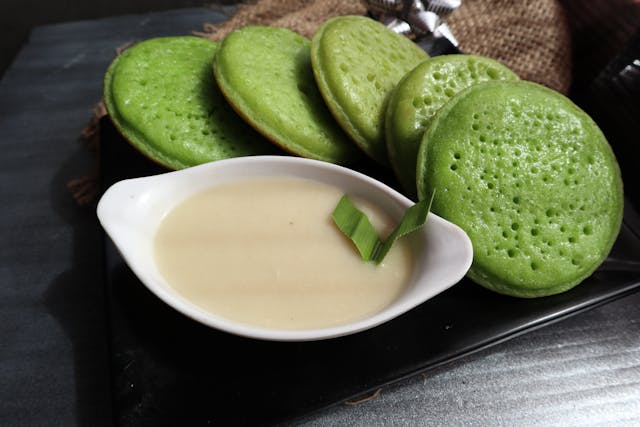
Serabi is a traditional Indonesian food often enjoyed as a light snack or breakfast dish. There are two main types of serabi: the sweet version, usually served with kinca (a warm palm sugar syrup), and the savoury version, topped with or without seasoned oncom (fermented soybean).
Another popular variation comes from Solo, where serabi is made from rice flour mixed with coconut milk and cooked over charcoal, giving it a soft, fragrant texture similar to a pancake.
Regional Ingredients in Indonesia Traditional Snacks
Indonesian snacks use a wide range of local ingredients, each adding its own flavour and texture.
- Glutinous rice: Common in sticky cakes such as lemper and lupis.
- Coconut milk: Adds creaminess and fragrance to steamed cakes and rice snacks.
- Rice flour: The base for many soft cakes like putu ayu and kue talam.
- Banana leaf: Used for wrapping snacks, giving them aroma and keeping them moist.
- Tapioca flour and sago: Found in chewy desserts and fritters.
- Peanut sauce and sweet soy sauce: Used in savoury snacks like lontong or batagor.
- Krupuk (crackers) and kripik (chips): Usually made from yam, fruits or vegetable cooked in deep fried. Often served as side snacks, adding crunch to Indonesian meals.
This combination of local ingredients and traditional cooking methods makes Indonesian snacks deeply rooted in culture, sustainability, and regional identity.
How to Enjoy Indonesian Traditional Snacks as a Tourist
If you are visiting Indonesia, the best place to try these snacks is at local markets (pasar tradisional) or small street food stalls. You can also find them in coffee shops or roadside vendors that serve Indonesian street food.
Start your morning with a plate of lupis or klepon, enjoy kue lumpur with tea in the afternoon, or have lemper for a light meal. Many of these snacks are affordable, freshly made, and best enjoyed warm.
When exploring different regions, look out for variations like bika ambon in Medan or kue talam in Jakarta as each area brings its own twist to the recipe. For a more adventurous experience, try pairing them with local drinks such as wedang jahe (ginger tea) or es cendol made with coconut milk and palm sugar.
